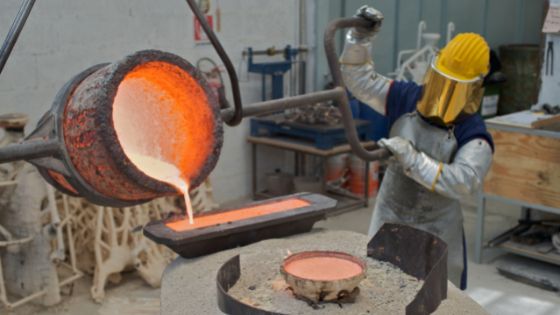A foundry requires intense heat and is a place where molten metal is cast into new molds. Specific gases are used for burning in the factory to keep the base metals molten as they are cast. Casting methods are employed to mold different metals correctly. It is a specialized process where expertise in metallurgy is required.


Casting different metals is a process that requires intense heat. A foundry uses different gases to maintain the right temperature. Working with base metals requires the temperature to remain immensely hot at all times. The foundry gas mixes bought from the supplier include hydrogen, nitrogen, and oxygen that maximize output and keep the metals blazing hot for production. It uses metallurgists, pattern makers, molders, and furnace men. Here is everything you will need to know about a foundry.
What are the Applications?
The applications of a foundry are seen in multiple industries requiring metals cast into particular shapes and sizes. For instance, metal products are used in motor parts, heavy machines, railroads, and plumbing equipment. The main purpose of such a factory is to cast metals in different modes to make a specified product as per the dimensions required.
The factory may be differentiated based on the metal which is being cast. So the foundry will come to be known by the type of metal like bronze, iron, or brass. The casting process is usually done with iron, copper, aluminum, steel, bronze, and other alloys. One casting method used in factories is called gravity die casting.
Here, the molten metal is folded into a mold made of sand and then allowed to cool down. Another method is called centrifugal die casting. This technique specifically creates pipes or items hollowed out in the middle. Here, the metal is poured into a mold, then rotated at a certain speed so that the molten metal is pulled outwards.
It covers the surface of the mold, leaving the middle part hollow. Optimum temperature conditions must be maintained so that the melted metal remains molten in the mold until it is time for setting. Factory owners use foundry gas mixes for heat treatment while acting as reducing agents and optimizing the production in the factory.
What are the Tools Used?
The hand tools used in a foundry are related to shaping the mold and helping in the casting process. The workers use shovels, litters, trowels, sticks, clamps, wedges, bellows, and gate cutters. Other hand tools used include:
- Hand riddle
- Spruepin
- Draw spike
- Vent rod
- Spirit Level
- Strike off bar
- Smoother
- Hand rammer, pneumatic rammer, peen rammer
What are the Safety Precautions?
Because the workers are operating in high temperature and pressure conduction, safety precautions must be considered. Situation awareness and the strength to tolerate harsh working conditions are highly valued. A proper cooling process is necessary for a foundry; otherwise, the environment can become hazardous. The melting points of different metals can easily go beyond 1400 degrees Celsius.
Extreme temperatures lead to steam explosions if the workers are not careful about the cooling procedures. Only experts are allowed to load metals in the furnace to ensure the safety of everyone in the foundry. The workers loading metal should know about the metals’ properties to ensure everyone’s safety and not cause any damage to the equipment.
Other safety precautions include eye protection gear, face shields, aluminized clothing, and hard hats. The factory is constructed with high roots so that the air can circulate. The floor should also be made of non-reactive material rather than concrete which can crack due to extreme heat.
Conclusion
Metallurgy cannot be complete without a foundry that uses different casting processes to produce specialized metal products. It requires expertise from the workers along with precautions to ensure safety.














